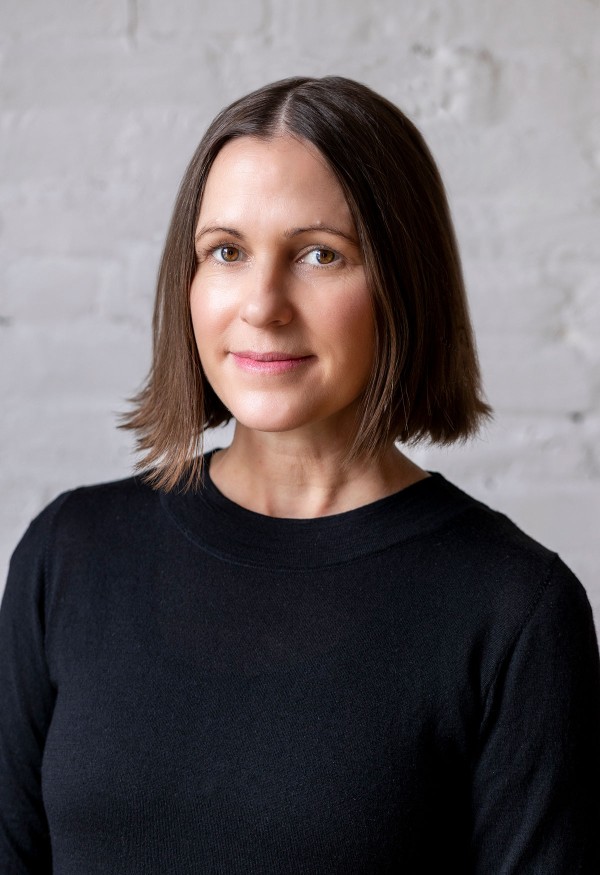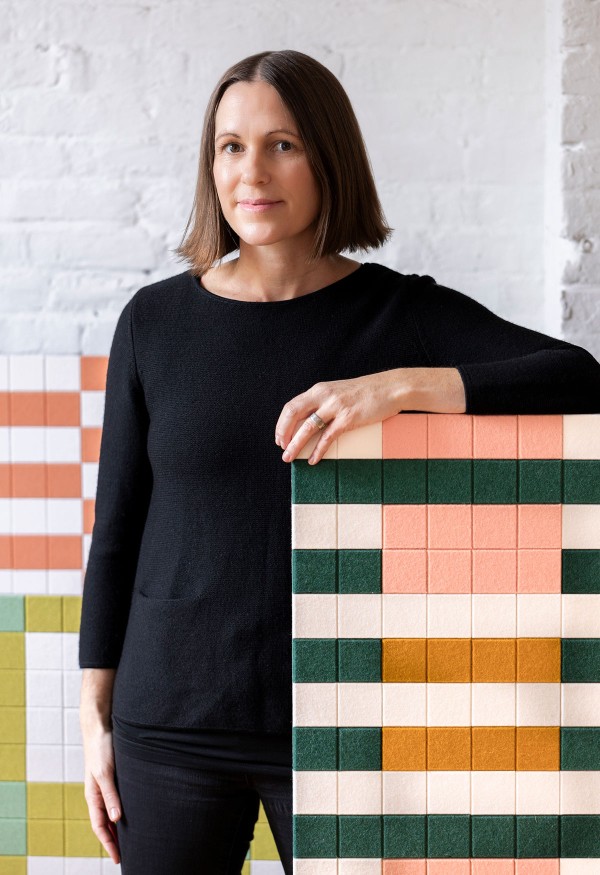
Behind the Design
The Kelly Harris Smith Designs for Mosaik
Since the founding of FilzFelt in 2008, Boston-based designer (and FilzFelt co-founder!) Kelly Harris Smith has designed various playful products ranging from wall applications to hanging panels to stitched floor coverings. Always balancing intricacy and simplicity, Kelly’s designs are distinctive for their pattern and color and are continuously inspired by her surroundings in the city of Boston. “I’m obsessed with pattern, texture, and color and hunt for those every day, particularly in the city. Whether it’s the color of the sky at a particular moment, the texture of a manhole cover, or the patterning on a facade, I'm constantly recording.”
This year, she’s back with a new collection that draws inspiration from traditional textile design and the work of German textile designer Anni Albers. The Kelly Harris Smith collection pieces together designs using Mosaik, an acoustic wall application that uses robotic technology to customize and assemble mosaics from 100% Wool Design Felt.
Kelly’s collection includes five playful patterns in completely customizable colorways that put a new spin on the ancient art of mosaics. The designer, a textile designer herself, takes us on dive into the inspiration and the process behind developing the show- stopping collection.
Tell us about this collection! What was the inspiration behind each of these unique patterns?
The work of German textile artist Anni Albers is a big inspiration for me. I love how she set up systems and grids and worked within limitations. Her design process also involved painting and mixed media drawings.
I love looking closely at textile diagrams and appreciate experiments like this with warp and weft yarns. Seeing what happens when the weft changes but the warp stays the same or vice versa. I love how certain colors will appear differently in combination with other colors or make an entirely new color. The smallest change can have the biggest impact on any pattern.
I was also really inspired by Artaic. I loved the idea of using smaller pieces to make a larger pattern. This Boston-based mosaic tile company invented sophisticated design software and innovative robotic mosaic assembly systems to modernize the art and installation of mosaics.
The patterns I created for the Mosaik Collection are inspired by traditional woven textile patterns. Visiting Artaic gave me a better understanding of how this product could be unique. In a typical wall tile product, having this many colors and elements isn’t really possible. But, in a single Mosaik tile, more than thirty-six smaller tiles are assembled to make a larger pattern on the wall. It’s a different way of thinking about what is possible in terms of customization and installation.
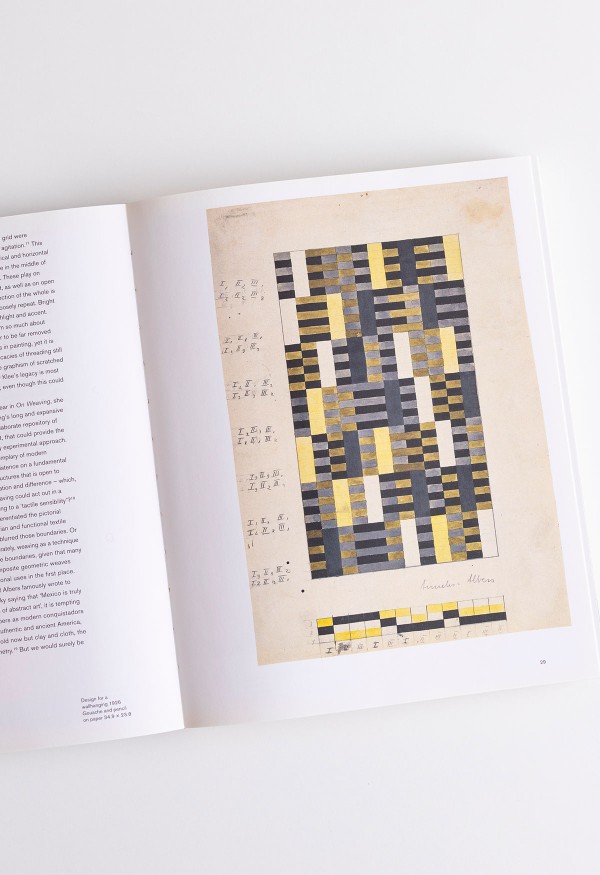
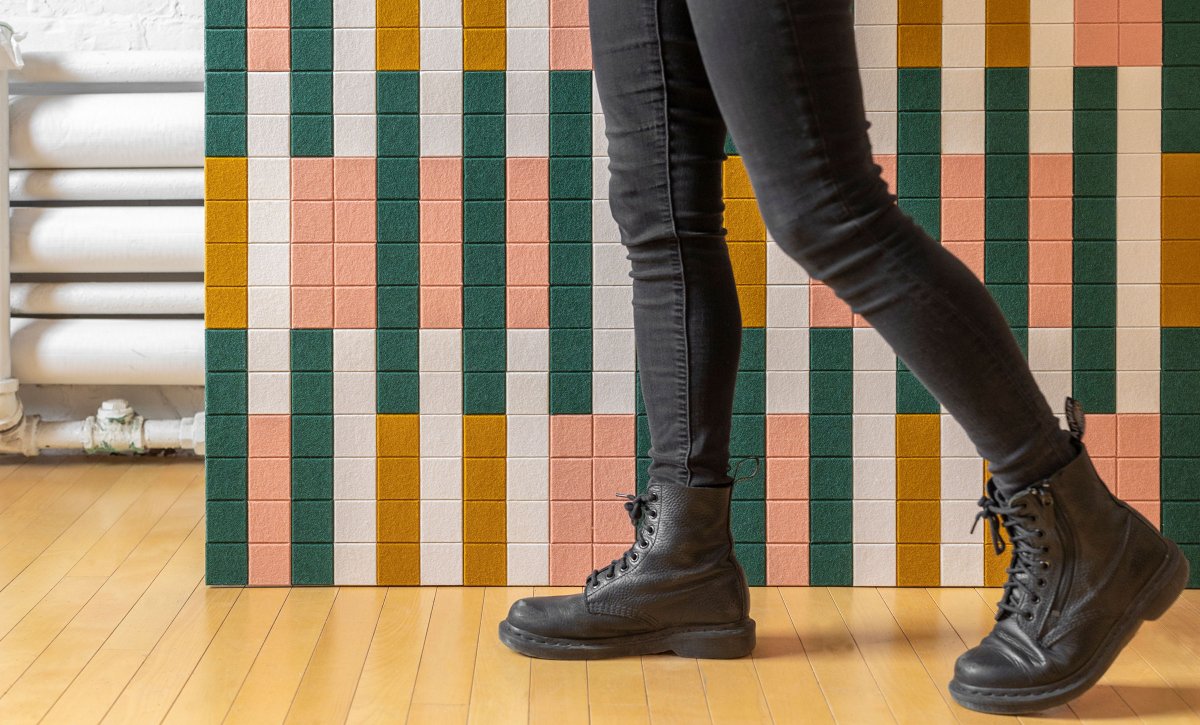
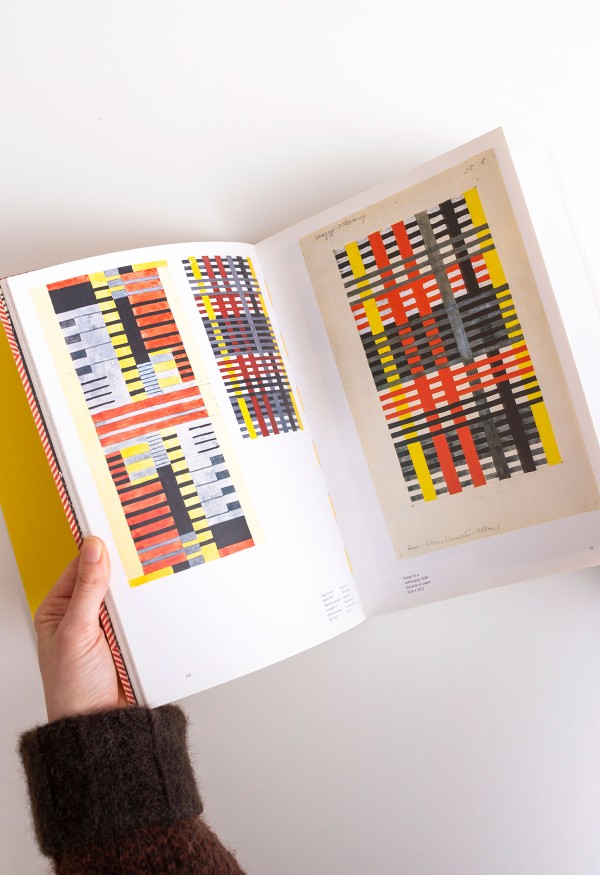
“The work of German textile artist Anni Albers is a big inspiration for me. I love how she set up systems and grids and worked within limitations. Her design process also involved painting and mixed media drawings.”
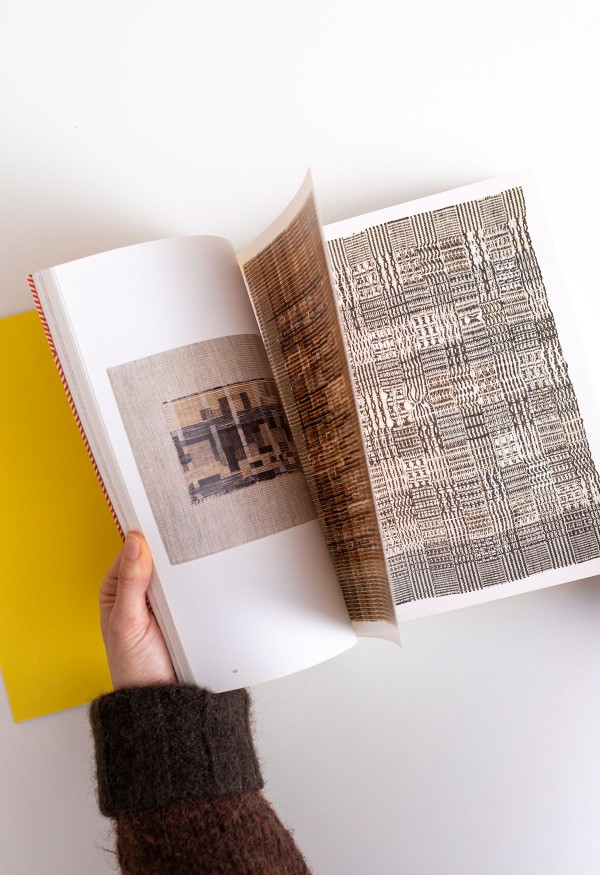
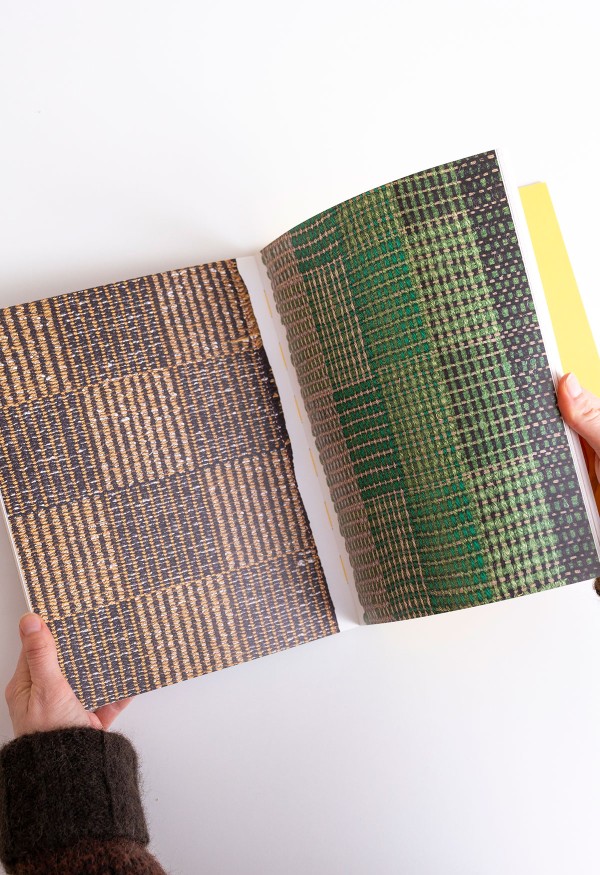
How significant is color theory to this collection? These patterns offer designers the opportunity to play with color in new ways.
With this product, it’s possible to incorporate many more colors on one wall than a standard acoustic wall tile product. This allows interior designers the opportunity to bring in a variety of colors to a space.
What advice would you offer to those who find color intimidating? Where should one start when selecting colors for patterns like these? Do you have any basic rules you follow?
I love tonal gradations. Color can be intimidating, so when starting a project, I recommend choosing colors within a similar family–warms, cools, or neutrals, for example.
It’s also important to consider the type of space it’s going in and if the color may relate to the furniture, fixtures, or flooring. So, working with existing interior elements can also be a great place to start.
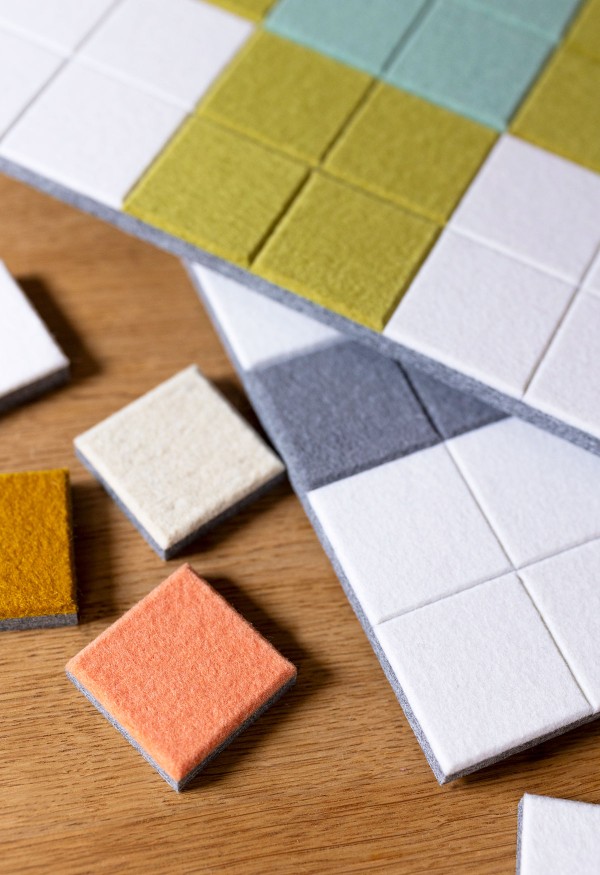
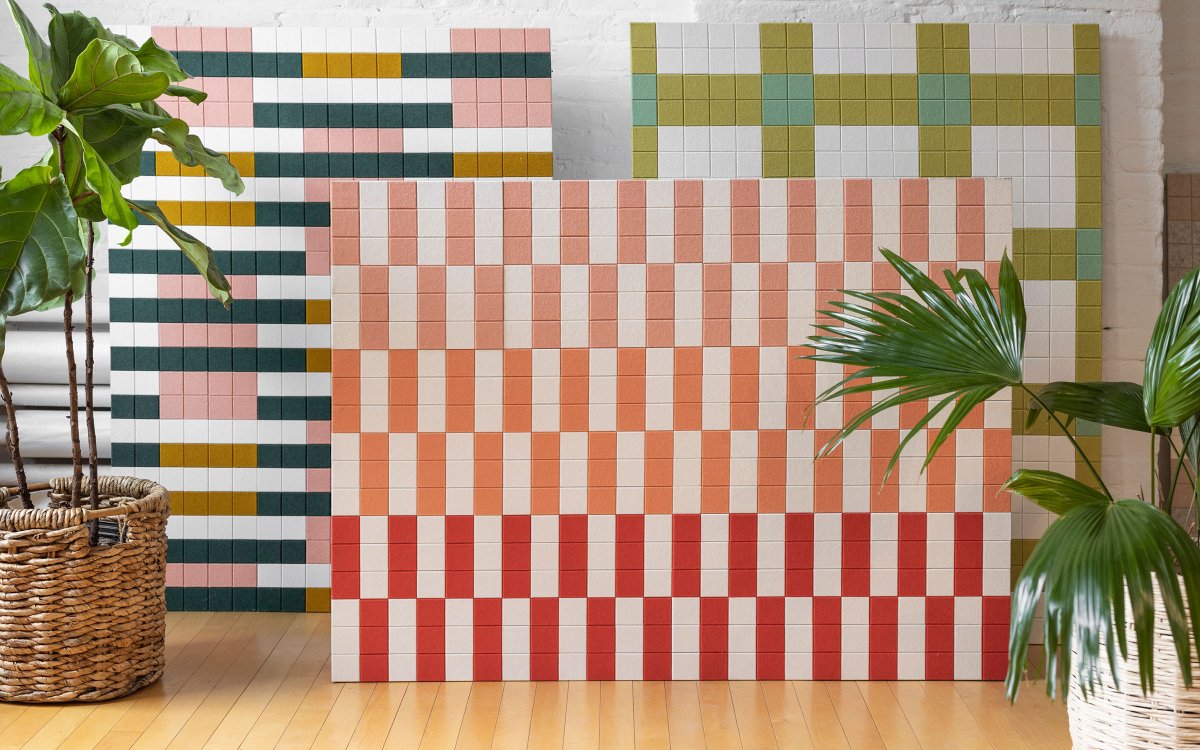
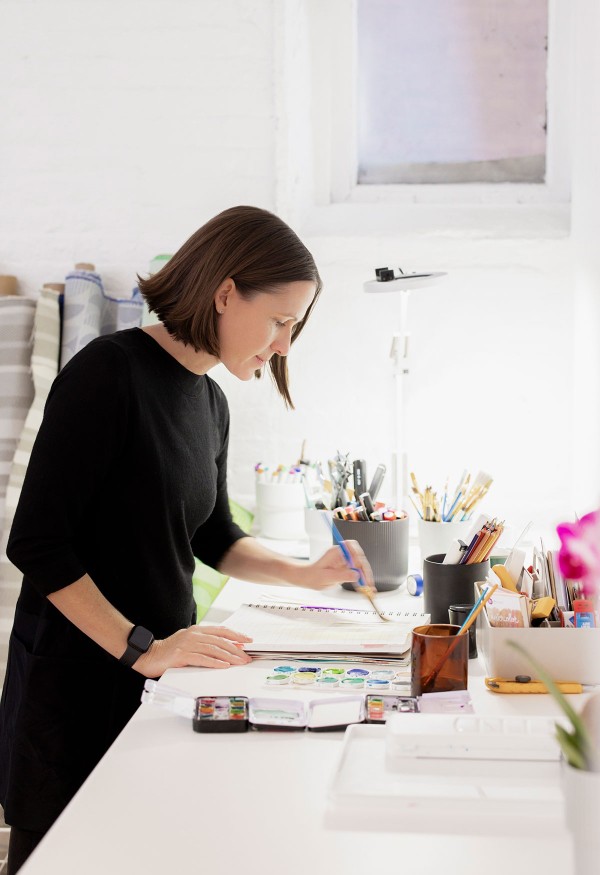
You’ve developed various products for FilzFelt over the last fifteen years. What are you most excited about/proud of with this collection?
I’m really proud of the sustainability story and material reuse of the Mosaik Collection. We’re using post-manufacturing, pre-consumer offcuts and remnants to make an entirely new product. They’re also made and assembled locally (yay, Boston!). This is standard practice for Artaic, but what makes them particularly exciting is the customization possibilities in mosaic wall tiles, which are seemingly endless.
Where do you envision these patterns? In what kinds of spaces do you see this collection?
The Mosaik Collection consists of sound-softening modular tiles that create a one-of-a-kind sound absorption and acoustic solution. So, I can see them predominantly used in office, hospitality, and education spaces. (Maybe even a performing arts classroom?!)
When starting the process, how was it different from designing traditional textiles? Can you show us any of this process? Do you sketch before you work with the material or jump right in with felt?
I started with drawing and painting patterns on graph paper that I thought would be interesting at a larger scale. I also experimented with woven paper strips. After that, I moved to Illustrator drawings and finally to putting together felt prototypes.
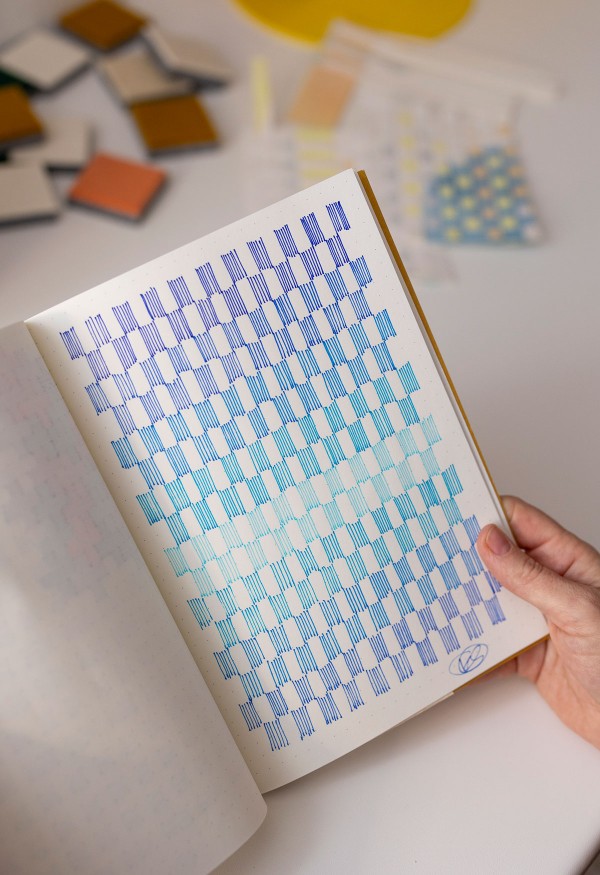
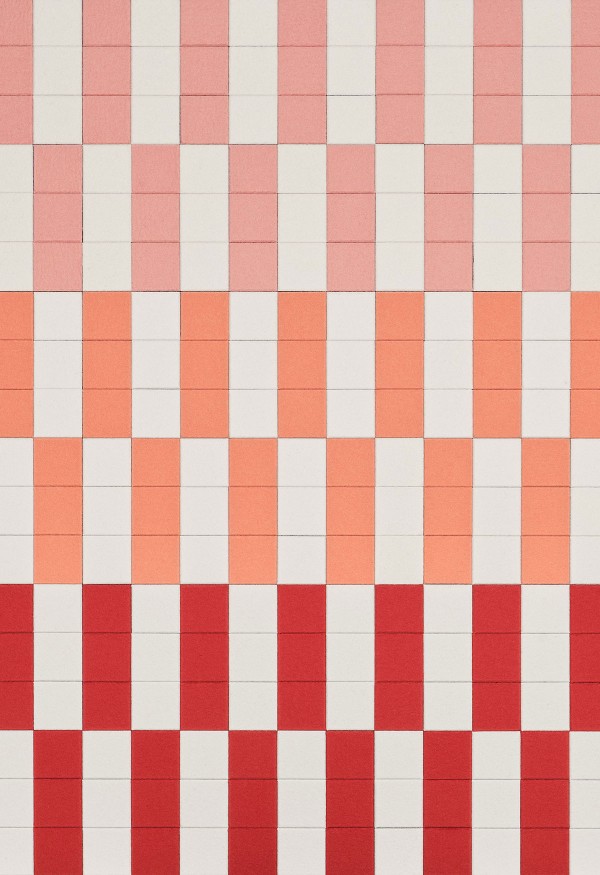
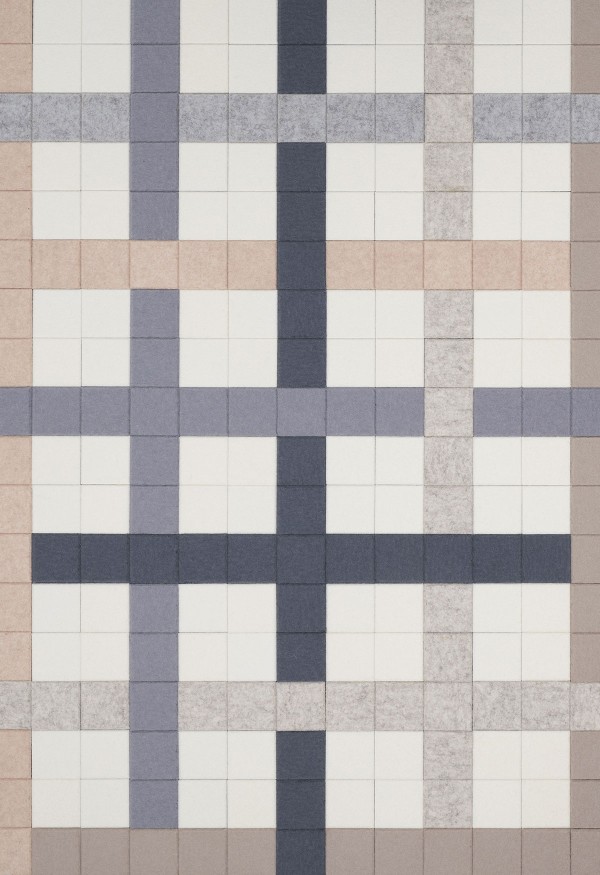
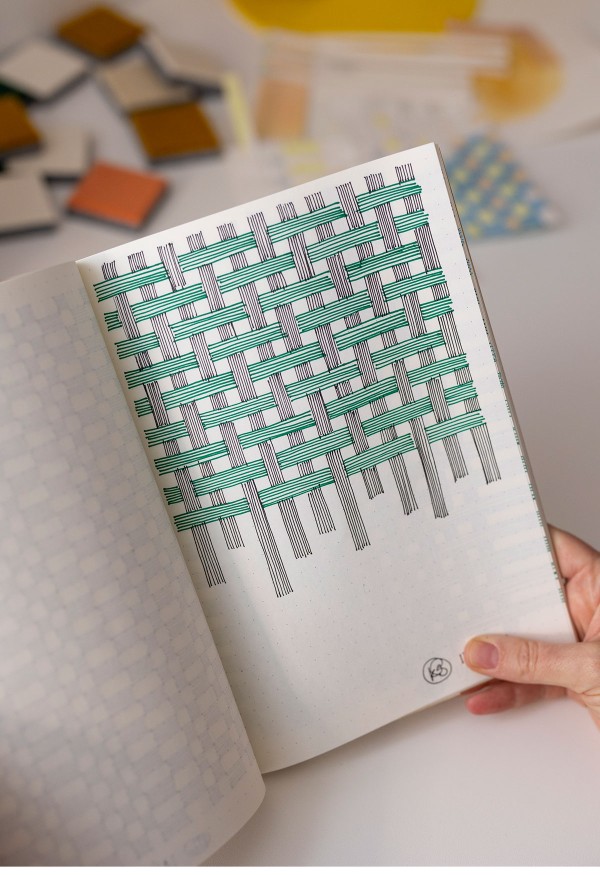
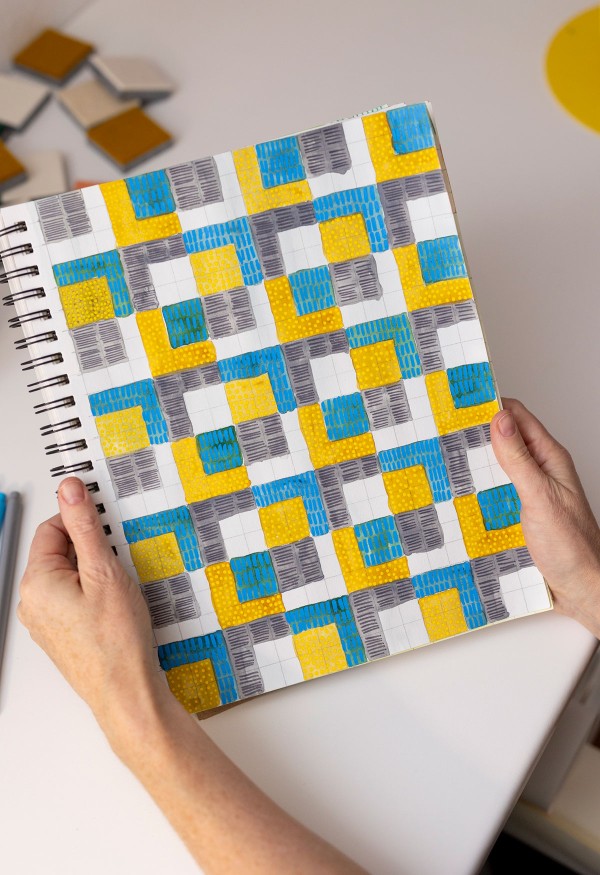
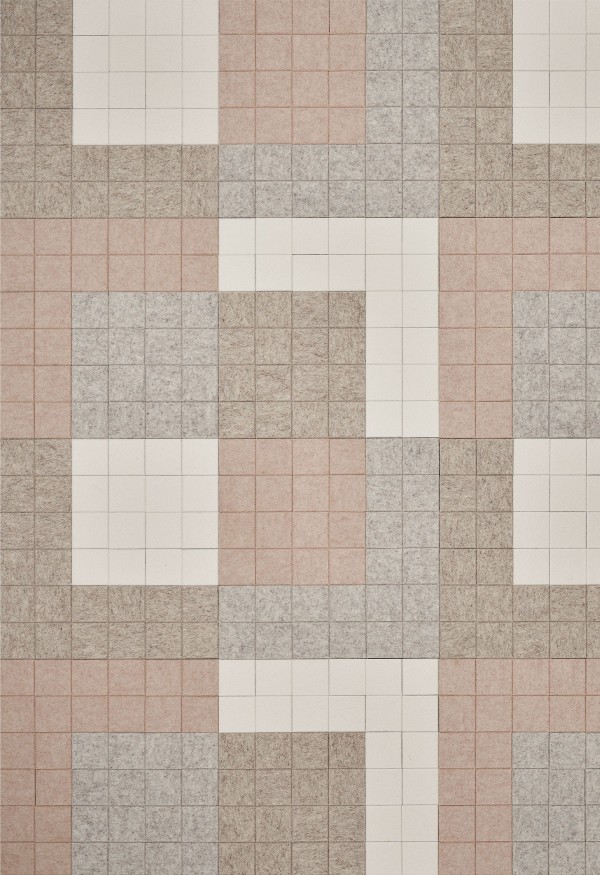
“I started with drawing and painting patterns on graph paper that I thought would be interesting at a larger scale. I also experimented with woven paper strips. After that, I moved to Illustrator drawings and finally to putting together felt prototypes.”
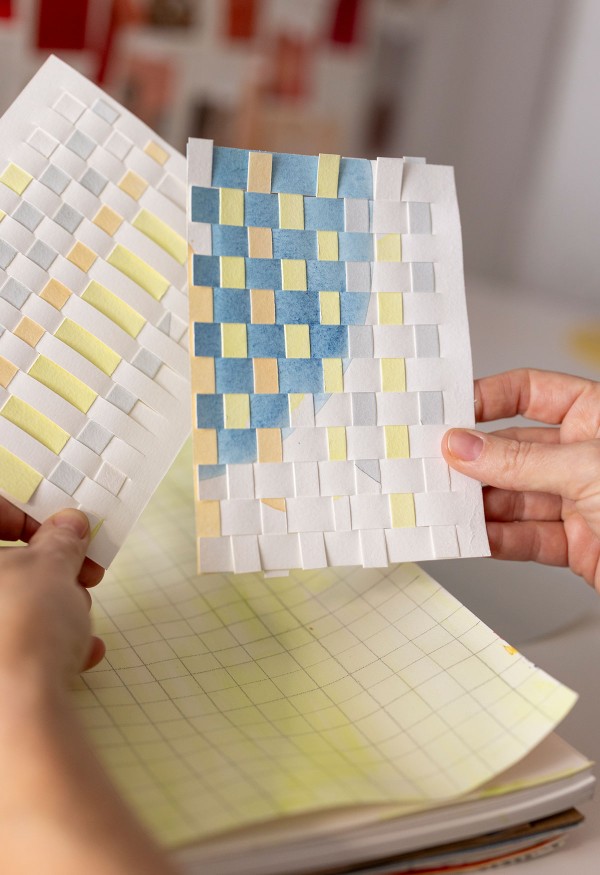
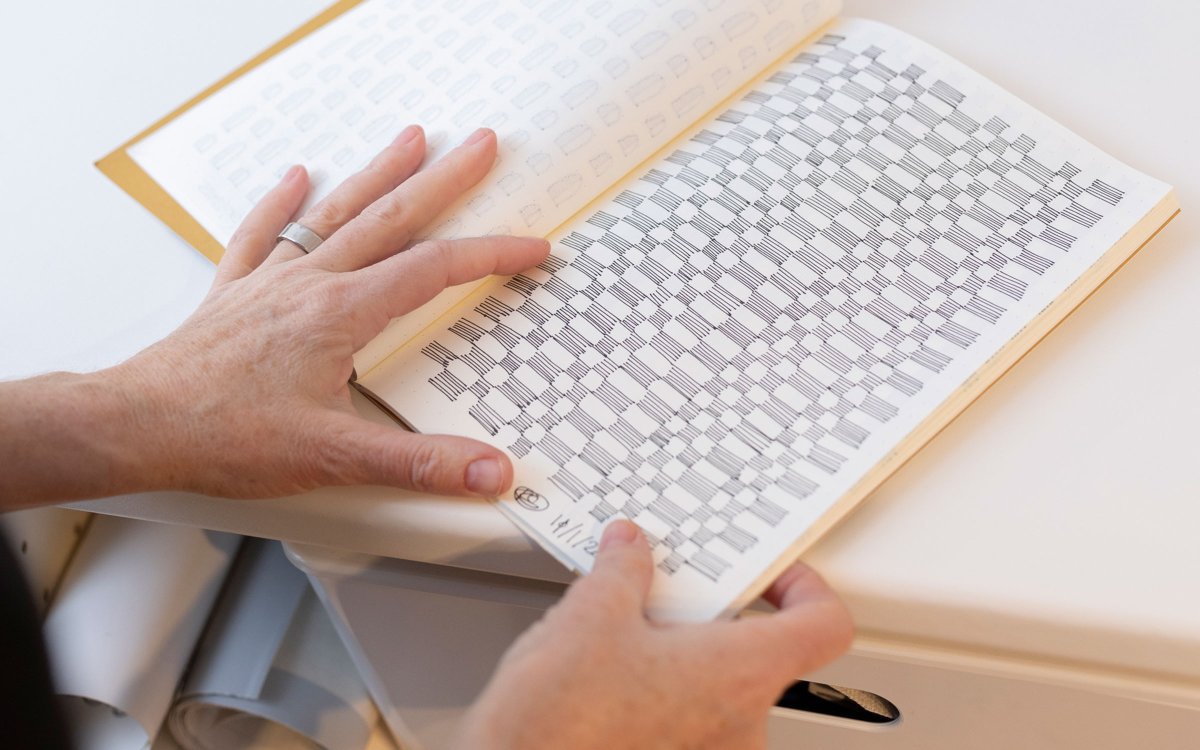
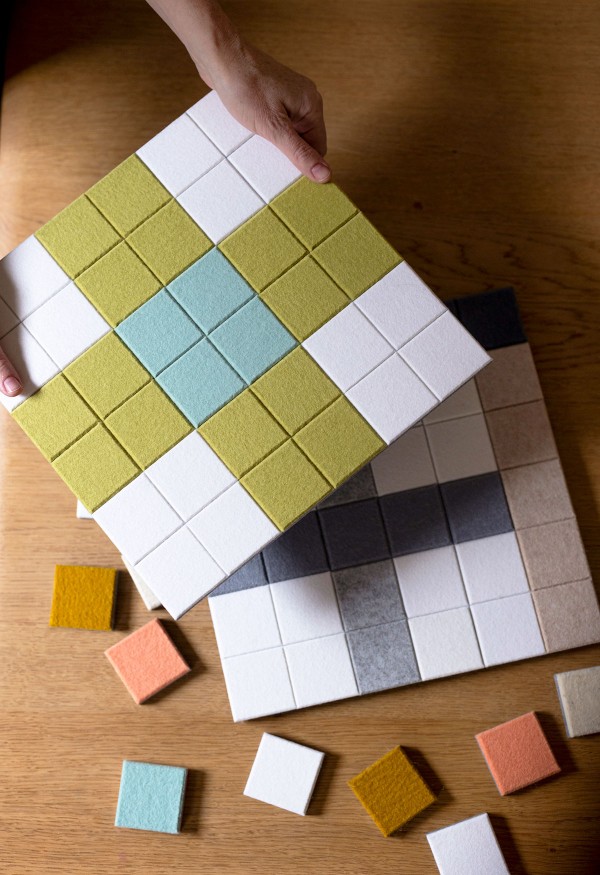
How did the architectural application inform this process (as opposed to traditional textiles?)
I tried to play with the scale of this product—really blowing up the size of a traditional woven pattern and imagining it on the wall. I played with several patterns that I could envision at a much larger scale and for an architectural application, so I moved those through the prototyping process to see how they scaled up.
What makes felt a good material for designs like these?
Wool felt is a softer material that provides sound-softening and acoustic absorbing capabilities while remaining customizable. The range of colors that can be sourced from FilzFelt’s palette allows for interesting and dynamic patterning to occur.
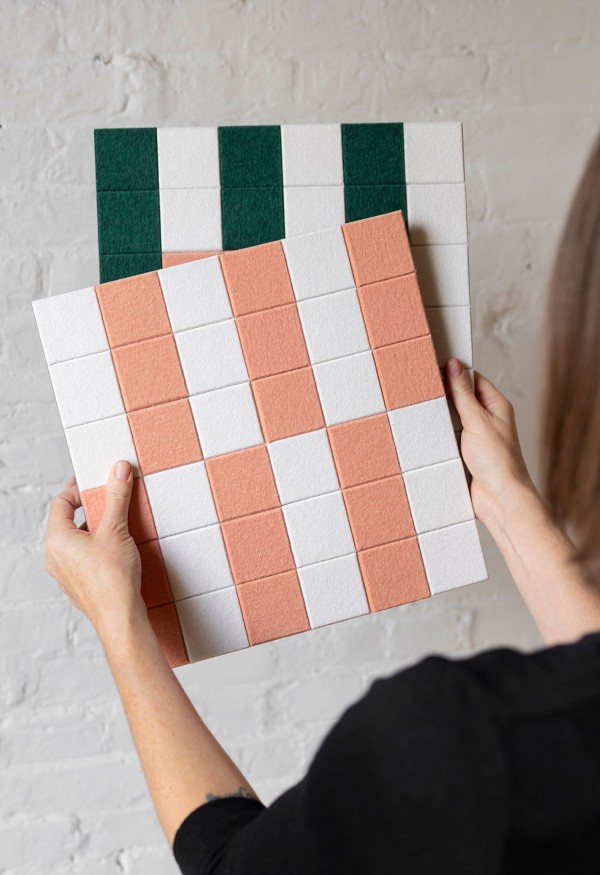
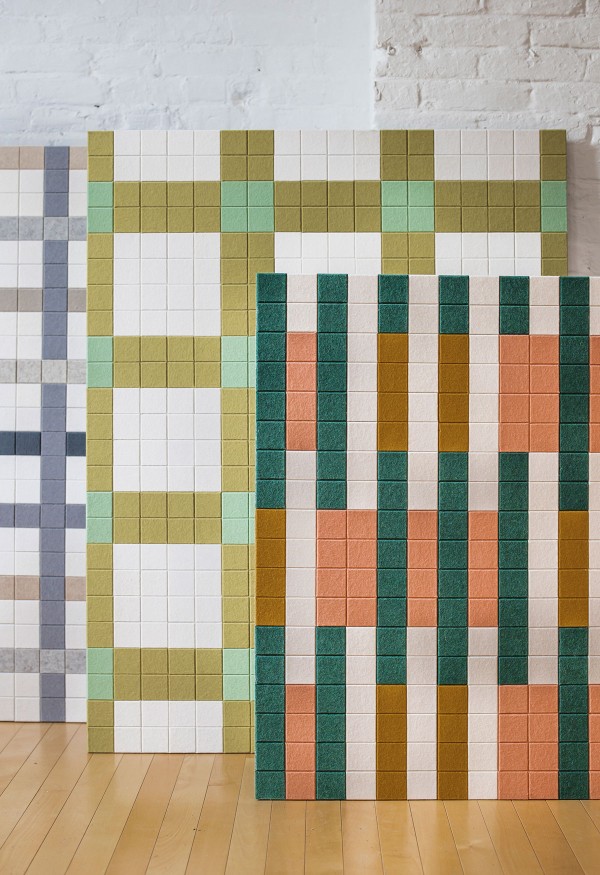
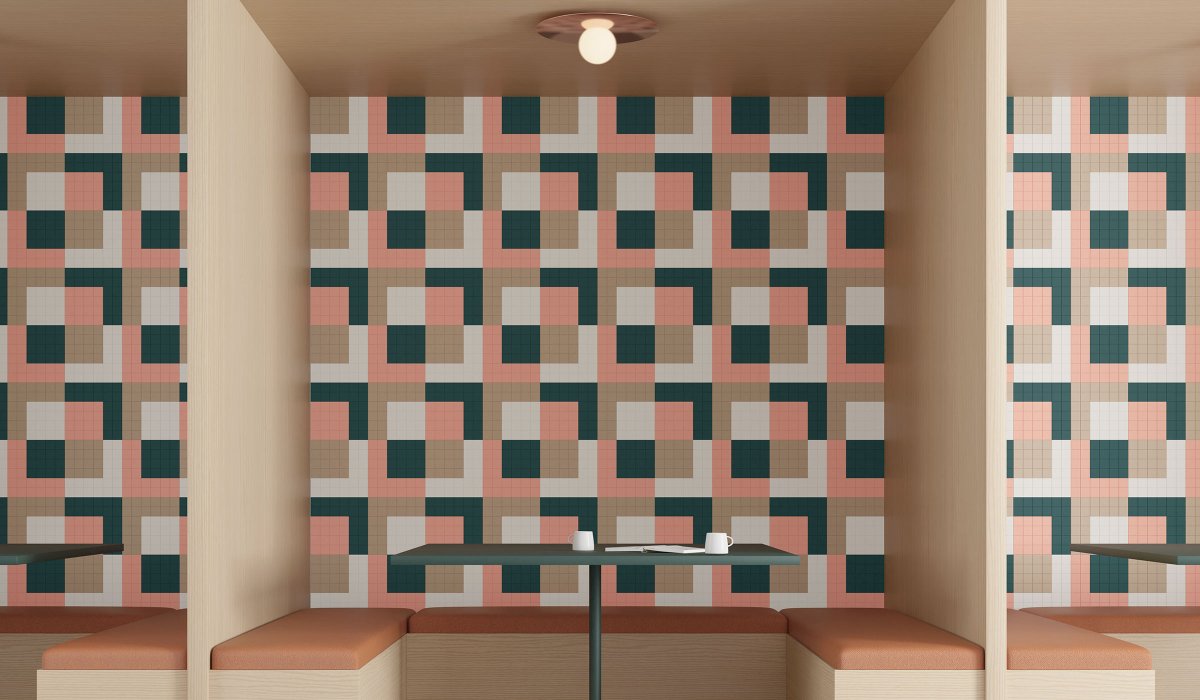
About Kelly Harris Smith
Kelly Harris Smith is an independent designer and creative director specializing in natural and sustainable materials in commercial and residential interior design. By balancing intricacy and simplicity, Kelly’s designs are distinctive for their pattern, color, and innovative functionality. Whether she’s creating small accessories or large interior architecture installations, Kelly begins her design process with a thoughtful analysis of how people will interact with the product or environment. A co-founder of FilzFelt, she was Creative Director and VP of Design for Spinneybeck | FilzFelt until her departure in 2017.
